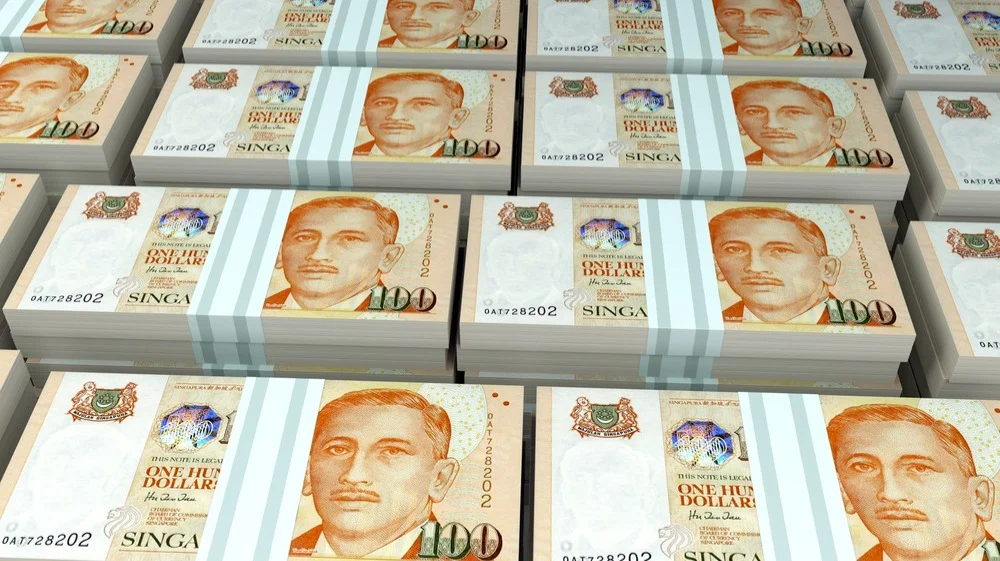Singapore's dollar has become a safe haven currency. Can it compete with the franc and the yen?
Singapore dollar may eventually become Asia's "Swiss franc"

The Singapore dollar has begun to be perceived by investors in Asia as a safe haven currency due to the "exceptional stability" of the exchange rate, CNBC writes. In 2025, it has significantly strengthened against the U.S. dollar. However, Singapore's currency is still far from being a global safe haven asset: small market volume, manageable exchange rate and limited liquidity are hindrances.
Details
The Singapore dollar is acting as a protective asset for investors in Asia and emerging markets, OCBC currency strategist Christopher Wong told CNBC. While Singapore's currency doesn't have the same global stature as traditional safe havens like the dollar, yen or Swiss franc, its defensive potential comes into play during times of financial turmoil - especially in Asian markets, said Wong.
The Singapore dollar has appreciated against the U.S. dollar by 6 percent since the beginning of 2025. Over the next five years, its exchange rate could reach parity with the U.S. dollar, according to Jefferies.
Singapore's dollar is perceived as a safe asset due to the authorities' sound economic fundamentals and and prudent fiscal policies - especially fiscal discipline, explained Omar Slim, co-head of Asian fixed income at PineBridge Investments.
Felix Brill, chief investment officer at VP Bank, agrees. He emphasized that Singapore's monetary policy has provided "exceptional stability" to the exchange rate, which is what investors expect from safe haven assets.
Singapore does not use interest rates to manage the exchange rate of its currency. Instead, it keeps the exchange rate within a narrow band tied to a basket of currencies of major trading partners. This management system limits the volatility of the Singapore dollar, reducing risk and increasing predictability in the short term, noted Jeff Ng, head of Asia macro strategy at Sumitomo Mitsui Banking.
What can prevent
Despite its resilience, the Singapore dollar has limitations. First of all - the size of the foreign exchange market. Its share in the global currency trade is only 2%, while the US dollar covers 88%, the yen - 17%, the Swiss franc - 5%, according to the Bank for International Settlements (Bank for International Settlements).
In addition, a managed exchange rate restrains speculative activity and the formation of large positions. This reduces liquidity, a key parameter for any global safe haven currency. "Such a model builds confidence - but constrains scale," says VP Bank's Brill.
In addition, Singapore is an export-dependent economy, and the authorities are not interested in a sharp appreciation of the national currency, accounts Natixis economist Chinh Nguyen. "If investors start actively buying Singapore dollar-denominated assets, it will lead to its appreciation," Nguyen explained, warning that the monetary authorities will not allow this to happen.
The pressure factor on the Singapore dollar in the coming months could be a tightening of U.S. trade policy, warns Bloomberg. President Donald Trump has threatened to impose new duties on pharmaceuticals and semiconductors, key Singapore exports. Against this backdrop, expectations have intensified that Singapore authorities will weaken the national currency as early as July to support the economy. On July 21, the exchange rate of the Singapore dollar approached the mark of $1.285 per U.S. dollar, according to forecasts of Bank of Singapore, may temporarily weaken to $1.3, the agency notes.
What potential
Despite the limitations, experts see the Singapore dollar as promising. It can play an important role in diversification and be a "third currency" in investors' portfolios, says Jean Chia from Bank of Singapore. The status of a safe haven currency is formed over decades: although the Singapore dollar was not the first choice in global crises, its role may grow in the future, says Brill from VP Bank.
PineBridge's Slim is optimistic about the future of the Singapore dollar, especially amid the declining appeal of traditional safe haven currencies. While Singapore's currency is unlikely to replace the dollar or yen, it "will increasingly be seen as Asia's Swiss franc," he predicted.
This article was AI-translated and verified by a human editor
